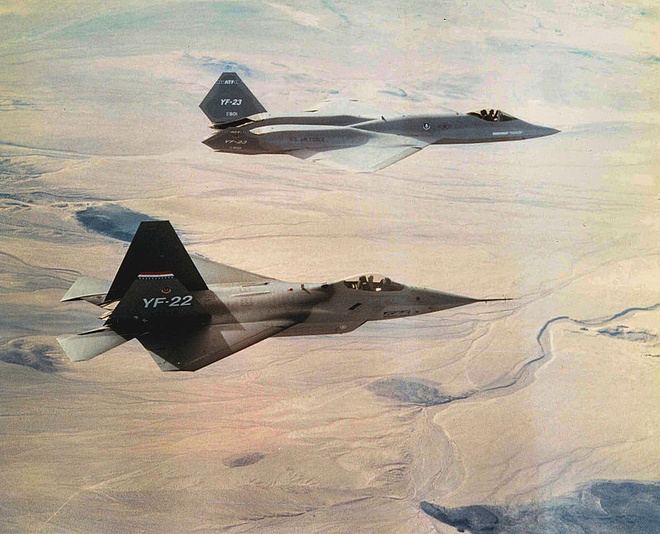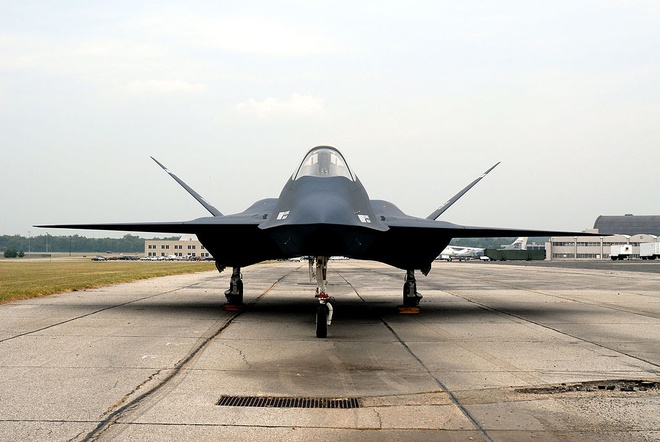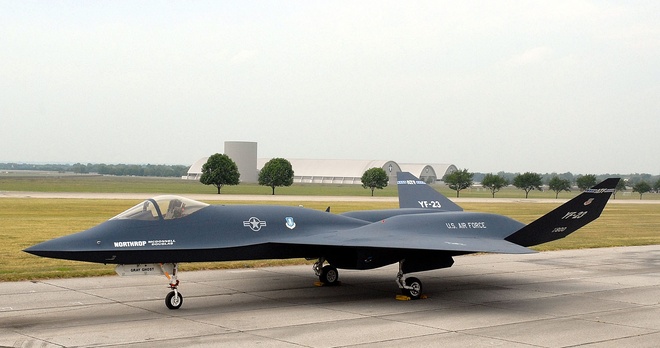In the world of advanced fighter jets, the YF-23 and F-22 are often pitted against each other as exemplars of cutting-edge technology. While the F-22 Raptor has achieved iconic status as a premier stealth fighter, the YF-23, with its radical design and advanced features, arguably possesses qualities that could make it a superior choice for air dominance. Here’s why the YF-23 might have the edge over the F-22.

Design and Aerodynamics
One of the most striking differences between the YF-23 and the F-22 is their design philosophy. The YF-23, developed by Northrop Grumman, features a unique, forward-swept wing configuration that enhances its maneuverability and speed. This design, coupled with its distinctive stealthy, angular lines, allows for superior aerodynamic performance, which translates into greater agility and high-speed capabilities. The forward-swept wings, in particular, contribute to a more efficient airflow, reducing drag and improving overall flight dynamics.
In contrast, the F-22’s traditional delta wing design offers its own set of advantages, such as stability at high speeds and improved performance in certain combat scenarios. However, the F-22’s design compromises some aspects of maneuverability for its stealth characteristics and overall stability.
Stealth and Survivability
Both aircraft were designed with stealth as a critical factor, but the YF-23’s stealth capabilities were particularly groundbreaking. Its shape and surface materials were specifically engineered to minimize radar cross-section and infrared signature, making it exceptionally difficult to detect by enemy sensors. The YF-23’s stealth features were so advanced that it was considered a major leap forward in reducing radar visibility compared to the F-22.
The F-22, while also stealthy, has been criticized for its larger radar cross-section compared to the YF-23. This difference could affect the F-22’s ability to avoid detection in highly contested environments.
Avionics and Sensor Systems
The YF-23 was equipped with advanced avionics and sensor systems that were ahead of their time. Its radar and electronic warfare systems were designed to provide superior situational awareness and electronic countermeasures. This allowed the YF-23 to detect and engage multiple targets at greater distances while maintaining a lower profile.
The F-22’s avionics, though highly advanced, were designed with different priorities. The Raptor’s sensor suite excels in integration and data fusion, giving it an edge in some combat situations. However, the YF-23’s early adoption of cutting-edge technologies in its avionics package suggests it might have offered even greater advancements in radar and sensor capabilities.

Performance and Speed
The YF-23’s performance characteristics were impressive, with top speeds potentially exceeding those of the F-22. The aircraft’s design allowed for higher speeds and greater acceleration, which could provide a significant advantage in both offensive and defensive maneuvers. Its superior speed and climb rate would enable it to outpace and outmaneuver many of its contemporaries, giving it an edge in various combat scenarios.
The F-22 is renowned for its remarkable agility and speed, but the YF-23’s performance metrics suggest that it could have surpassed the Raptor in some key aspects of high-speed flight and maneuverability.
Conclusion
While the F-22 Raptor has cemented its place as a formidable and iconic fighter jet, the YF-23 represents a tantalizing glimpse into what might have been. With its advanced design, superior stealth capabilities, cutting-edge avionics, and impressive performance, the YF-23 could arguably be considered a more advanced and capable aircraft in certain respects.
Ultimately, the choice between these two aircraft highlights the complex trade-offs involved in designing next-generation fighters. The F-22’s operational success and continued service demonstrate its effectiveness and reliability, but the YF-23’s potential advantages underscore the remarkable technological strides made during its development. As we look to the future of air combat, the legacy of the YF-23 reminds us of the exciting possibilities and the ever-evolving nature of aerospace technology.






